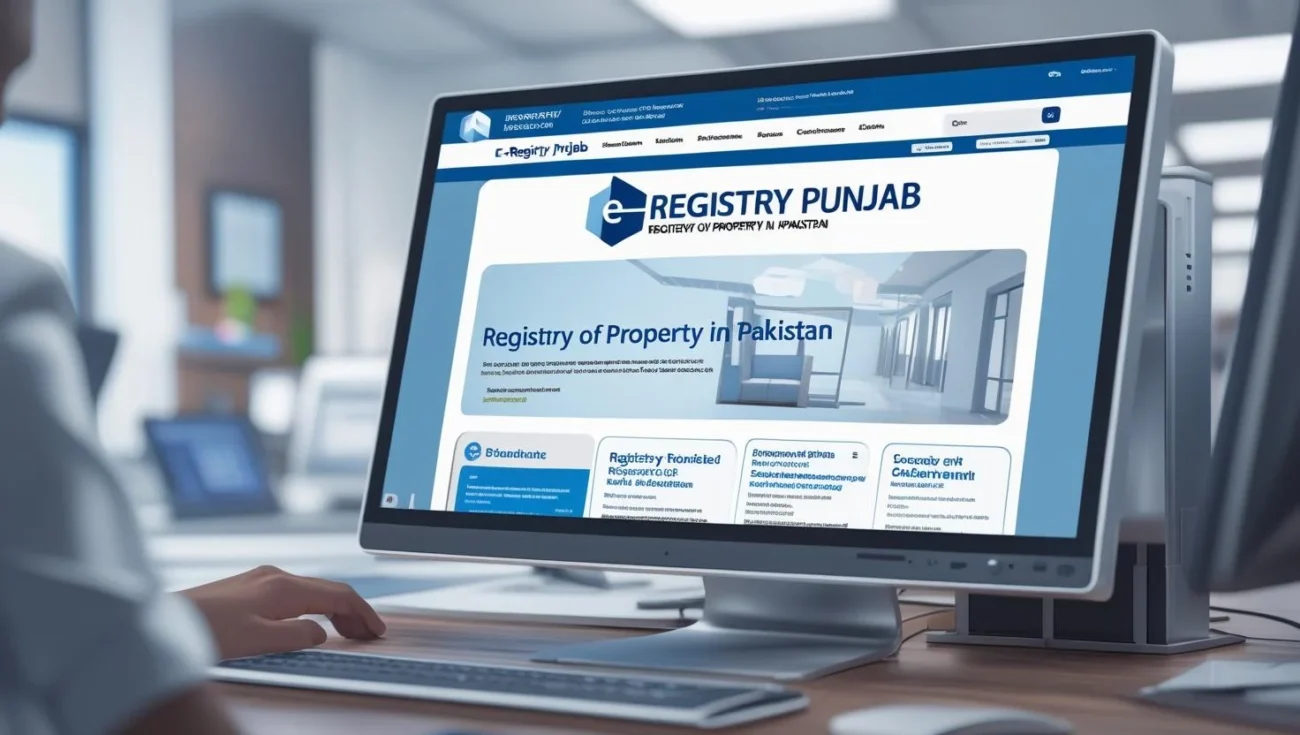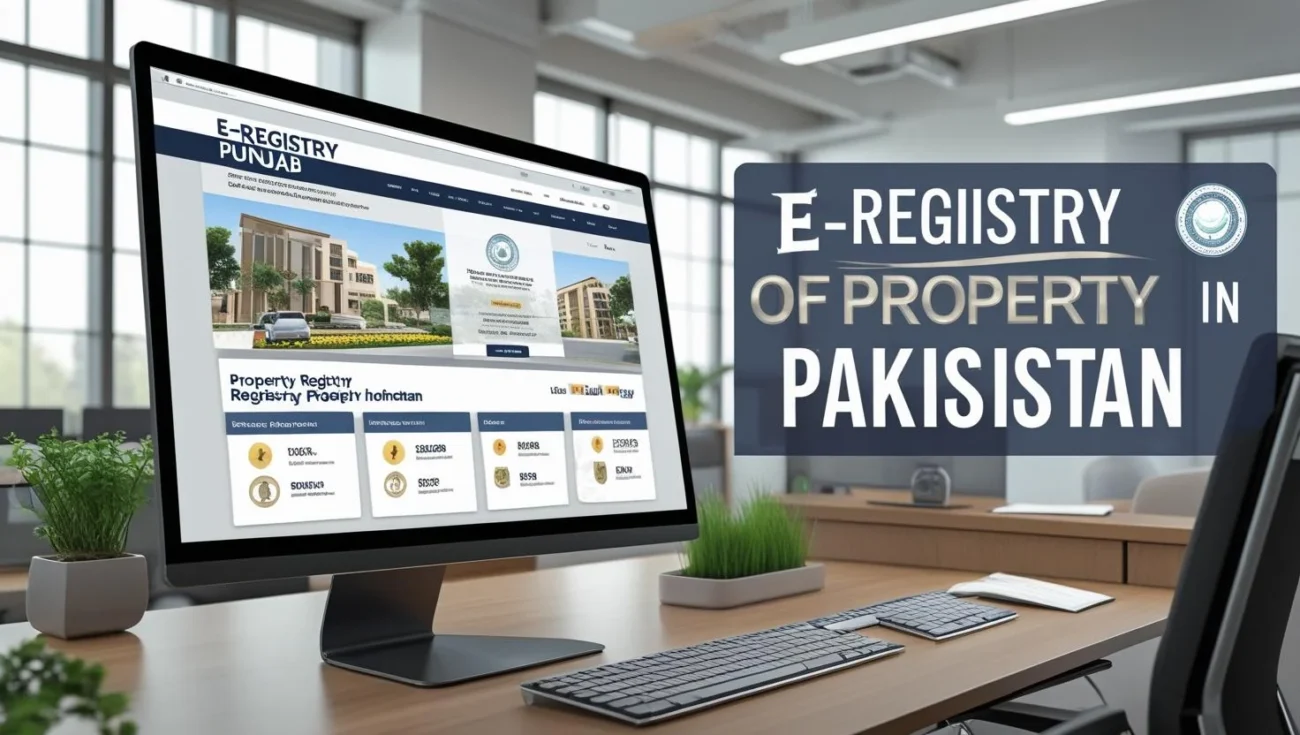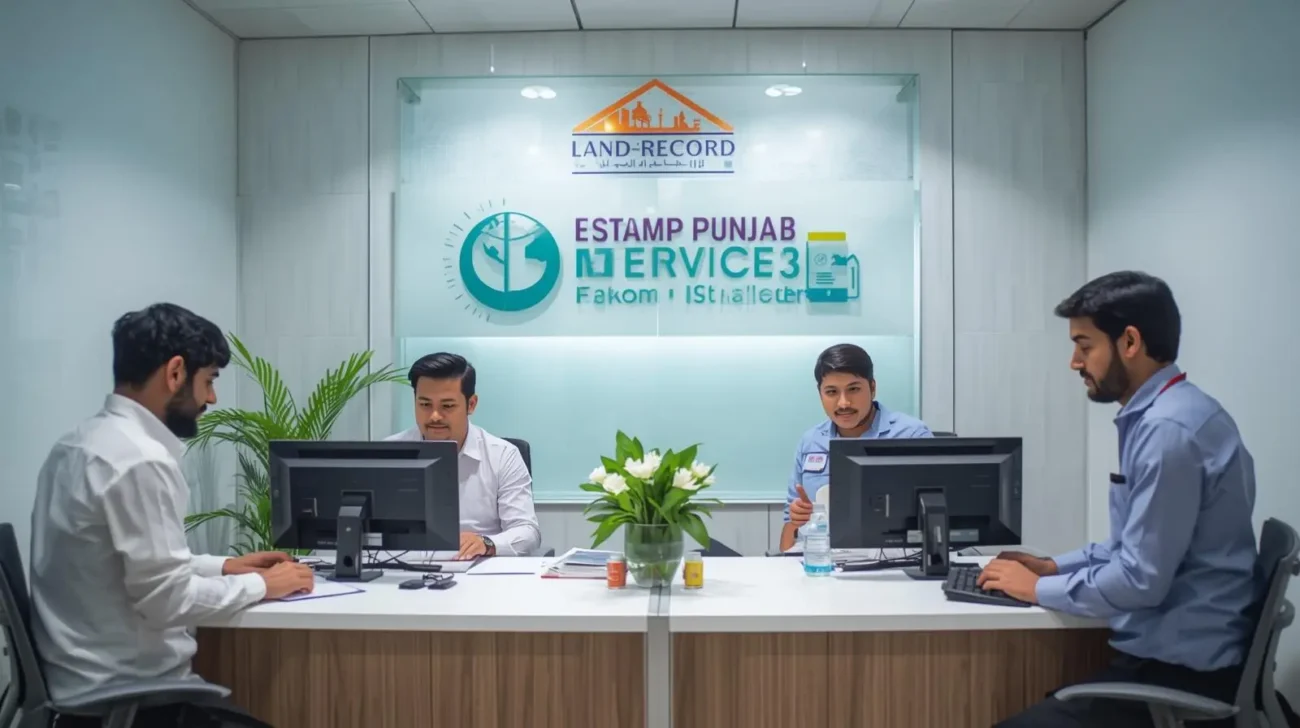In Pakistan, owning land has always been integral to personal wealth and the economy as a whole. It is accompanied by legal transfer, which is a critical challenge as well. The old ways of check online registry of property relied on a lot of manual work and physical document verification were slow and prone to scams. The government is modernizing the digital processes of registration in the Punjab province by implementing an e-registry system which is meant to improve accuracy and efficiency. e registry Punjab simplifies property registration, increases accuracy, enhances trust, and reduces reliance on outdated systems.
Legal Structure Governing Property Registration in Pakistan
In Pakistan, property registration is a provincial matter. Each province has its own system of record keeping of land and registration. In Punjab, the PLRA is in charge of land record management under the supervision of the Board of Revenue. In former times, Patwaris maintained property registers under the supervision of Tehsildars. These records were useful to prove ownership, identify property location and dimensions, and record its valuation and transactions.
This approach faced many challenges, such as title fraud, lost documents, and land disputes. The manual system of registry exposed many owners of land, particularly in the rural regions, to fraud due to unavailability of secure and verifiable records.
How e Registry Punjab Transformed Property Registration?
To improve service delivery and address these challenges, of check online registry in punjab. The goal was to modernize the infrastructure for registering property transactions to make them more trustworthy, open, and user-friendly. This system allows for the digitization and secure storage of all legal transactions related to property, such as sales, transfers, inheritances, and more. Reducing human interference in these processes aids in the reduction of delays. Furthermore, the system increases accountability at all administrative levels. With the introduction of this system, the province has automated many of the registry’s manual processes.

How e Registry Punjab Works in Practice?
As its nucleus, E Registy Punjab facilitates the online submission and processing of property transaction documents. Citizens can now log onto PLRA’s official webpage and they are walked through online robotic forms that take the place of handwritten documents.The system requires parties involved in the transaction to undergo biometric verification, which is cross-referenced with NADRA (National Database and Registration Authority) to confirm identity and legitimacy. Compliance with tax obligations such as the payment of stamp duty and capital value tax are checked through the systems and retrieved from the Federal Board of Revenue (FBR) which lowers risks of tax evasion.
After submission of the application and supporting documents, online bookings can be made for inspections and/or for final clearance and approvals. The transaction outcome, viz. approved, rejected, or under review, can be monitored in real-time which saves the multiple visits to the land offices. Migrating to online platforms not only helps save time but promotes public faith as all actions can been seen and verified.
Understanding the Registry of Property and Its Importance
The registry of property serves as an official document that verifies an individual’s ownership of land or property. It also records any changes to ownership, whether through sale, inheritance, gifting, or mortgaging. Registration of the property serves as legal proof of protective ownership. It safeguards the owner, and assists in accessing loans, investments, and other financial resources. It also provides documentary proof for the settlement of ownership disputes.
Ownership of land in a country like Pakistan, especially in developed and developing areas like Punjab, comes at an expensive price. Due to the emerging trends in urbanization, land value increases, thus digitization of such records through systems like e registry Punjab ensures preservation of records.
How to Check Online Registry in Punjab?
The digital aspect of the platform remarkably allows users to check online registry details without stepping into any office physically. This feature works for prospective buyers, investors, and legal consultants who want to check the authenticity of ownership before making any deal. Users only need to provide the owner’s CNIC or property registration number to the PLRA portal to receive, in summary form, the legal status of the land, its current ownership details, and any existing liabilities such as unpaid taxes or mortgages. This level of transparency not only boosts confidence in property transactions, but also diminishes the frequent fraudulent land sales in both rural and urban areas.

The Role and Process of e Registry Verification
The registry verification step is particularly critical in maintaining the integrity of a property transaction conducted in the PLRA system. In a verification search, the system connects to a centralized repository with all the properties registered in real time. This verification step is necessary to disclose important matters such as whether the land title is clean, the seller is the registered owner, and if the land is subject to any legal suits.
Buyers are strongly recommended to perform this verification step prior to any transaction to mitigate the risk of fraud, encumbrances, or even legal claims. In the past, such information was elusive. Now, with the aid of technology, this information is available at the turnaround time of a few minutes.
Benefits of e Registry Punjab for the Public and Government
The launch of e registry Punjab has brought about widespread benefits for multiple stakeholders. It provides the public with easier access, lower expenses, and correct details about the properties. Both city and country dwellers no longer have to physically queue at land offices. Legal practitioners and real estate brokers also benefit as the registry streamlines the processing of cases and due diligence. Government officials no longer have to depend on estimates and have seen an improvement in revenue tax collection and the integrity of the data because the records of the properties are now kept in one secured place.
Addressing Challenges and Looking Ahead
Check online registry system has provided so much help people and government agencies that there is still much to be done. Challenges like a lack of computer and internet skills still remain. Another problem is the need to convert older records into a format acceptable for computer storage which ironically is a collaboration of district officials and land record historians. Another problem is the lack of proper training and government users for the system to be fully adopted and utilized. Regardless, the government of Punjab is still willing to spend more on the infrastructure and information campaigns on digital property services.
The prospects of property registration indicate an ever accessible system for the citizens of Pakistan. Advancements and updates involving the injections of blockchain technologies for enhanced security and transparency to land records is projected. Other updates involve mobile phone apps and real-time updates of tax statements aimed to help ease burdens and to be more citizen friendly are also in the PIP.
Conclusion
Pakistan attempting to improve check online registry of property that marks purposeful progress in attempting to modernize the real estate industry and improving the level of responsibility in the sector. The development of e registry systems for different provinces is a step towards improving service delivery in property management. The online access to registry information and real time e registry verification for citizens has placed Punjab at the forefront of progress. With greater acceptance of technology and digitization in other provinces, the rest of the country is moving towards a property ecosystem that is sound in law, robust, and boundless for all.


